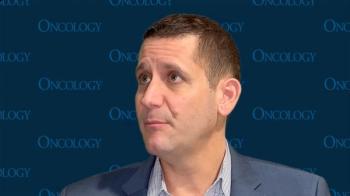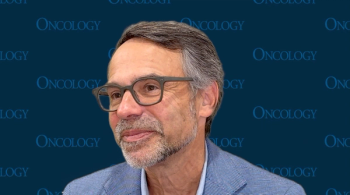
Durvalumab Combination May Benefit Aggressive T-Cell Lymphoma Subgroups
Preliminary phase 2 trial data show durvalumab plus lenalidomide was superior to durvalumab alone in refractory/advanced cutaneous T-cell lymphoma.
CancerNetwork® spoke with Christiane Querfeld, MD, PhD, professor and director of the Cutaneous Lymphoma Program at City of Hope, about whether any specific subgroup benefit emerged when treating patients with refractory or advanced cutaneous T-cell lymphoma with durvalumab (Imfinzi) combined with lenalidomide (Revlimid), as well as next steps for researching similar durvalumab-based therapies. Querfeld presented preliminary findings of a randomized, phase 2 trial (NCT03011814) evaluating the combination therapy in this patient population at the
Querfeld began by explaining that data she presented at ASH was preliminary, before stating that she hopes a final analysis will more effectively reveal subgroup benefit. She expressed that she has observed benefit in patients with large cell transformation and folliculotropism, as well as those with Sézary syndrome and erythrodermic mycosis fungoides, before reiterating that the final analysis will provide a more definitive answer on subgroup outcomes.
Querfeld then expressed that her team has planned an extension cohort, due to an observed benefit with the combination therapy in Black patients, who are more likely to have the disease. She further explained that by expanding the cohort to include patients with more aggressive forms of disease, as well as those who experience disparities, her team is seeking to better understand the impact of durvalumab plus lenalidomide in these patient subgroups. Querfeld suggested that her team was seeking to learn more from other T-cell lymphoma subtypes and solid tumor indications.
Efficacy findings from the trial showed that at a median follow-up time of 14.5 months (range, 0.9-29.7), the best global objective response rate was 42% for the durvalumab monotherapy arm vs 75% in the durvalumab combination therapy arm. Additionally, the median progression-free survival (PFS) was 8.5 months (95% CI, 2.2-not evaluable [NE]) in the monotherapy arm and not reached in the combination arm (95% CI, 2.8 months-NE).
Transcript:
These [data are preliminary], and hopefully the final analysis will come out for more specific details, but particularly, patients with large cell transformation and folliculotropism benefited from the treatment. We have also seen patients with Sézary syndrome and erythrodermic mycosis fungoides...benefiting from this treatment. [We] will have to wait until we have the final analysis available.
[Regarding the steps], we planned an extension cohort. What I forgot to mention is that, when we are talking about disparities, we know that the disease is most commonly seen in Black patients––[so] the question is whether the patients have more biologic, aggressive disease. We have included 5 patients in the combination arm, and we see that this patient population has [particularly] benefited from it.
Taking together all these aggressive subtypes, including disparities, we are expanding the cohort to include [more] patients to see how they benefit from this treatment, which is huge. We have [extended the trial] to another 40 patients. Hopefully, we can also potentially learn from other T-cell lymphomas. Peripheral T-cell lymphoma [PTCL] is still a group, so we could learn from that and potentially even [from] other solid tumors.
Reference
Querfeld C, Chen L, Wu X, et al. Randomized phase 2 trial of the anti-pd-l1 monoclonal antibody durvalumab plus lenalidomide versus single-agent durvalumab in patients with refractory/advanced cutaneous T cell lymphoma. Blood. 2024;144(suppl 1):468. doi:10.1182/blood-2024-205617
Newsletter
Stay up to date on recent advances in the multidisciplinary approach to cancer.
















































































